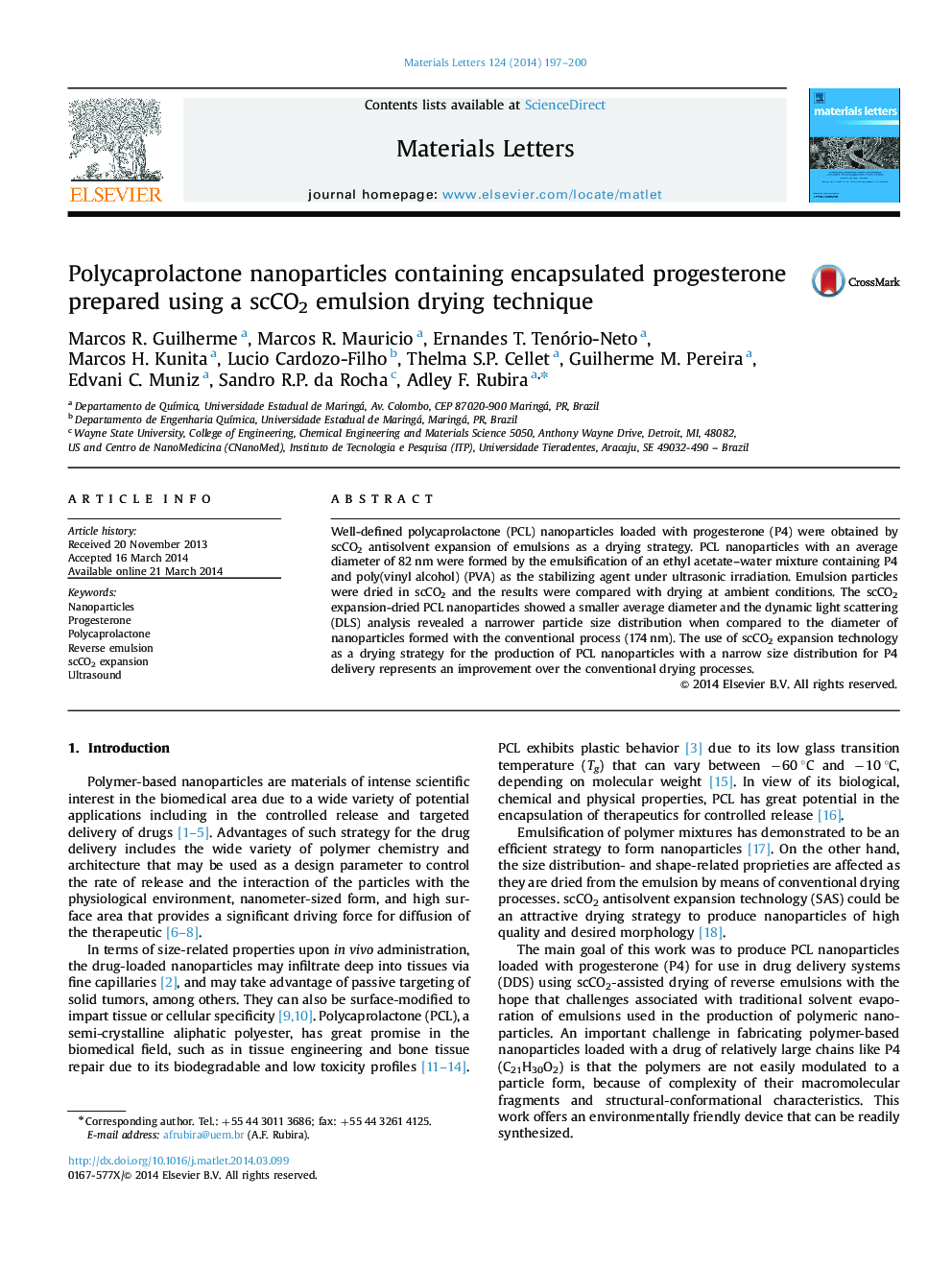| Article ID | Journal | Published Year | Pages | File Type |
|---|---|---|---|---|
| 1644408 | Materials Letters | 2014 | 4 Pages |
•Well-defined polycaprolactone nanoparticles loaded with progesterone were formed.•Nanoparticles were obtained by scCO2 expansion of an ethyl acetate–water emulsion.•scCO2-dried nanoparticles showed smaller diameter and narrower distribution curve.•In scCO2, the polymer chains were modulated to a more defined particle form.•This work offers an environmentally friendly device that can be readily synthesized.
Well-defined polycaprolactone (PCL) nanoparticles loaded with progesterone (P4) were obtained by scCO2 antisolvent expansion of emulsions as a drying strategy. PCL nanoparticles with an average diameter of 82 nm were formed by the emulsification of an ethyl acetate–water mixture containing P4 and poly(vinyl alcohol) (PVA) as the stabilizing agent under ultrasonic irradiation. Emulsion particles were dried in scCO2 and the results were compared with drying at ambient conditions. The scCO2 expansion-dried PCL nanoparticles showed a smaller average diameter and the dynamic light scattering (DLS) analysis revealed a narrower particle size distribution when compared to the diameter of nanoparticles formed with the conventional process (174 nm). The use of scCO2 expansion technology as a drying strategy for the production of PCL nanoparticles with a narrow size distribution for P4 delivery represents an improvement over the conventional drying processes.
Graphical abstractFigure optionsDownload full-size imageDownload as PowerPoint slide
